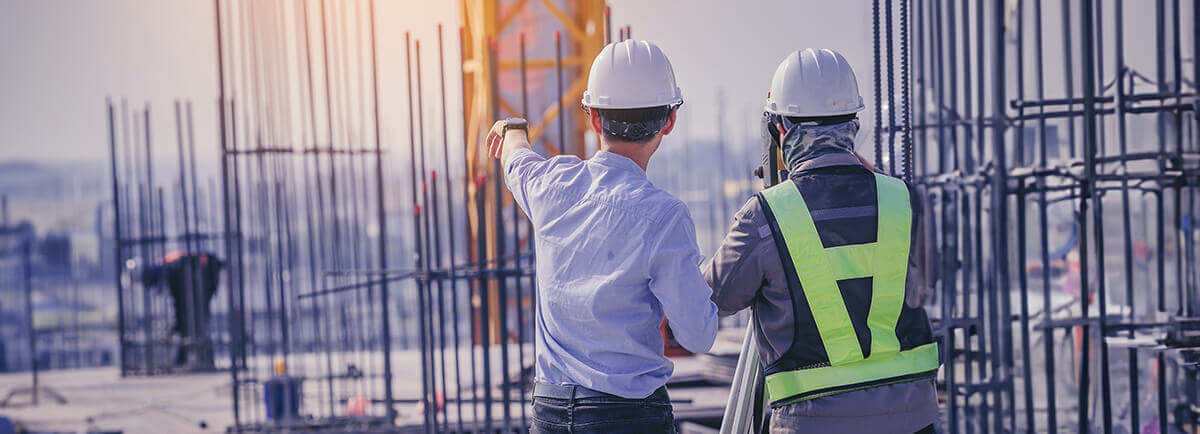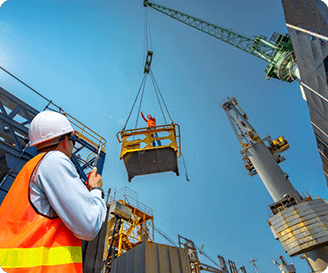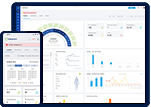
Risk Management in Construction: Key Principles and Best Practices
Construction is unpredictable. One day it’s smooth progress—next day, delays, accidents, or a surprise cost overrun. With so many moving parts, risks are baked into the job.
That’s why risk management isn’t a nice-to-have—it’s a must. It helps you spot potential issues early, plan for them, and keep your project on track when things don’t go as planned (which they often don’t).
In this article, we’ll walk through the key risks in construction, how to manage them effectively, and the tools that can make the process smarter and less stressful.
Types of Construction Risks You Should Expect
Every construction project—regardless of size—carries some level of risk. Here are the main categories to be aware of:

- Safety Risks: Falls, electrocution, equipment-related injuries, or exposure to hazardous substances.
- Financial Risks: Budget overruns, rising material costs, or delayed payments from clients.
- Regulatory & Legal Risks: Permit issues, non-compliance penalties, or disputes over contracts.
- Environmental Risks: Heavy rains, extreme temperatures, floods, or other natural disruptions.
- Design Risks: Incomplete specs, frequent change orders, or coordination errors between architects and contractors.
- Operational Risks: Shortage of skilled labor, equipment breakdowns, or logistics failures.
- Supply Chain Risks: Late material deliveries, vendor bankruptcy, or quality control problems.
Not every project will face all of these—but even a few can derail your schedule or inflate your costs.
The Risk Management Process in Construction
Managing risk isn’t about reacting when things go wrong—it’s about planning ahead. A solid risk management plan typically follows these five steps:
1. Risk Identification
Start with site visits, team brainstorming, historical data, and expert input. Look for anything that could affect safety, budget, timelines, or compliance.
2. Risk Assessment
Once identified, each risk is rated based on:
- Likelihood (How probable is it?)
- Impact (What’s the potential fallout?)
This is where tools like a risk matrix come in handy.
3. Mitigation Planning
For each major risk, ask: Can we avoid it? Reduce it? Transfer it?
Examples:
- Hiring certified subcontractors to reduce safety incidents.
- Locking in prices with vendors to avoid cost inflation.
4. Implementation
Mitigation strategies don’t mean much unless they’re executed. Assign owners, set timelines, and integrate controls into your project workflows.
5. Monitoring and Review
Risk management isn’t a one-and-done exercise. It requires frequent reviews, especially as new risks emerge during execution.
Tools and Techniques to Support Risk Management
Construction has come a long way from pen-and-paper planning. Today’s risk management toolkit includes:
- Risk Register: A living document that tracks risks, status, and responses.
- SWOT Analysis: Helps evaluate strengths, weaknesses, opportunities, and threats.
- Pre-task Planning Tools (PTPs): Encourage foremen and crews to identify hazards before starting a task.
- Checklists and Audits: Ensure nothing slips through the cracks, especially in safety and compliance.
- Risk Scoring Systems: Automate the prioritization of issues based on data.
- Insurance & Contracts: Mitigate financial risks through indemnity clauses or subcontractor agreements.
Who’s Responsible for Managing Risk?
The short answer? Everyone. But here’s how it usually breaks down:
- Project Managers oversee the overall risk strategy and documentation.
- Safety Officers focus on site-specific safety risks and compliance.
- Site Engineers & Supervisors handle day-to-day operational risks.
- Contractors & Subcontractors are responsible for executing safe and compliant work.
- Clients/Owners must be kept in the loop—especially when legal, financial, or environmental risks are involved.
Communication is key. When everyone understands their role, the process becomes smoother and more effective.
The Role of Technology in Construction Risk Management
Digital tools can turn a reactive process into a proactive one. Here’s how technology is reshaping risk management on modern construction sites:

- Centralized Risk Platforms bring together documentation, workflows, and approvals so teams can flag and respond to issues early.
- Mobile Inspection Apps allow crews to perform safety checks, report hazards, and upload photos directly from the field.
- Permit-to-Work Systems digitize high-risk task approvals, reducing delays and miscommunication.
- Project Scheduling Software helps detect and prevent timeline risks before they escalate.
- AI & Predictive Analytics provide early warnings by analyzing historical patterns and current site data.
- Drones & Wearables improve visibility and real-time monitoring of hazards and unsafe behaviors.
Solutions like Safetymint, built specifically for construction safety management, bring these capabilities into a single platform—making it easier to track incidents, analyze trends, and enforce safer work practices across the site.
Best Practices to Strengthen Your Risk Management Strategy
- Start early. Don’t wait until you’re on-site to begin risk planning.
- Engage your team. Field workers often spot risks that office teams miss.
- Document everything. If it’s not written down, it didn’t happen.
- Update regularly. Risks change as the project evolves.
- Learn from past projects. Use data from previous jobs to inform new ones.
- Create a culture of accountability. Make safety and planning part of the DNA—not just checkboxes.
There’s no such thing as a risk-free construction project. But with a clear plan, the right tools, and a team that understands the value of proactive risk management, you can minimize disruptions and protect both your people and your bottom line.
This article was generated with the assistance of AI and reviewed by Ben Johnson for accuracy and quality.
Ben Johnson is a dedicated Customer Success Executive at Safetymint. With a strong commitment to excellence, Ben works closely with customers to ensure they fully leverage the capabilities of Safetymint to its fullest potential, aiming to significantly reduce or mitigate safety risks and incidents.



